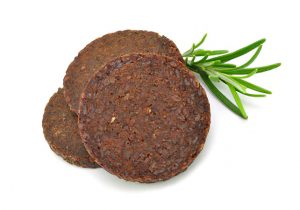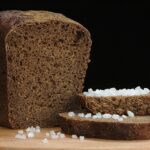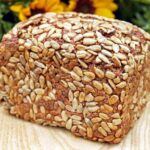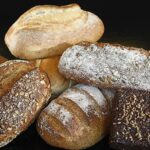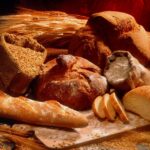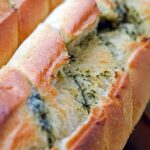Pumpernickel is a typically heavy, slightly sweet rye bread traditionally made with sourdough starter and coarsely ground rye. It is often made today with a combination of rye flour and whole rye berries. Pumpernickel has been long associated with the Westphalia region of Germany, first referred to in print in 1450. Although it is not known whether this and other early references refer to precisely the bread that came to be known as Pumpernickel, Westphalian pumpernickel is distinguished by use of coarse rye meal and a very long baking period, which gives the bread its characteristic dark color. Like most traditional all-rye breads, pumpernickel is traditionally made with an acidic sourdough starter. Pumpernickel has a rich dark-brown color, but no crust as it’s baked in fully covered baking tins.
Making Pumpernickel the proper way takes some effort and time, so be prepared for the delayed gratification effect!
Ingredients:
- 200 g rye berries
- 350 g dark rye flour
- 1½ cup lukewarm water
- 3 tbsp sourdough starter
- 350 g dark rye pumpernickel meal
- 350 g cracked rye
- 1 tbsp salt
- 1⅓ to 1½ cup lukewarm water
- 100 g imported golden syrup or real maple syrup
- 150 g dry-roasted unsalted sunflower seeds
Preparation:
-
Put the berries in a small saucepan and pour boiling water over them to cover by at least 1 inch. Cover and set aside to soak overnight.
-
For the starter, mix the rye flour, water and sourdough starter in a small bowl until well combined. Cover and let it rest overnight in a warm place.
-
Add enough water to the soaked rye berries so that there is about three times as much water a berries. Bring to a boil, then reduce the heat and simmer, covered, for about 1 hour, or until the berries are soft. Check for water once in a while to make sure the berries are always covered with plenty of water, and add more water if necessary. Drain the cooked berries and set aside to cool.
-
In a large bowl mix the dark rye pumpernickel meal, cracked rye and salt. Add the starter mix and 1⅓ cup water. Mix until well combined and no traces of flour remain. Add the cooked berries, syrup and sunflower seeds. Knead the dough using the dough hook of an electric mixer or your hands and add the rest of the water during kneading, as needed, until the dough starts to come off the sides of the bowl. The dough should be moist and slightly sticky so it might not come off the sides of the bowl like in other bread doughs, which is fine. Dust with rye flour and cover. Let rest in a warm place for 30 minutes.
-
Grease 2 loaf tins.
-
Knead the dough on a lightly floured surface to remove any excess air. The dough should be slightly sticky. Divide the dough into equal portions and place it into your baking pans or jars. Only fill the pans to two-thirds to make smaller loaves. Grease small pieces of aluminum foil and cover the jars/baking pans, greased side down. Let rest in a warm place for 2 to 3 hours.
-
Preheat the oven to 150 C. Remove the aluminum foil from the jars/baking pans and lightly spray the surface of the dough with water. Place the aluminum foil back on the jars/baking pans, greased side down. Make sure that the jars/baking pans are tightly covered.
-
Adjust the oven rack to the lowest setting. Place the jars/baking pans in the casserole and and place it on the oven rack. Pour about 1 inch hot water into the casserole. Place the lid on the casserole.
-
Bake for 1 hour at 150 C. Reduce the heat to 100 C and bake for 13 more hours. Add hot water to the casserole every few hours to maintain the water level. If you bake the bread overnight, pour more water into the casserole before you go to bed. A higher water level of 3 cm to 5 cm does not harm but an empty dry casserole may cause the jars to crack and should be avoided by all means.
-
At the end of the baking time, turn off the oven and leave the casserole in the oven for 1 hour. Then take the casserole with the jars/baking pans out of the oven and let everything cool on the counter for another 30 minutes, or until cool enough to handle. Meanwhile keep the oven door closed to trap the residual heat. Gently unmold the breads (promptly removing them is important, otherwise you will have trouble removing them later) and place them in the warm oven for a couple of hours to dry.
-
Remove the breads from the oven. Let them cool completely, then wrap them in wax paper or parchment paper and either place them in freezer bags right away, or let the bread sit in a cool place for another two days before cutting it on Day 5. Store the pumpernickel in an airtight container in the refrigerator.
Recipe credit http://bit.ly/2tpnXG9.
